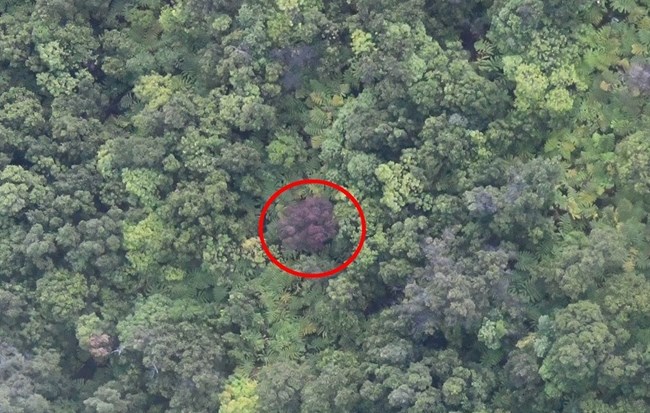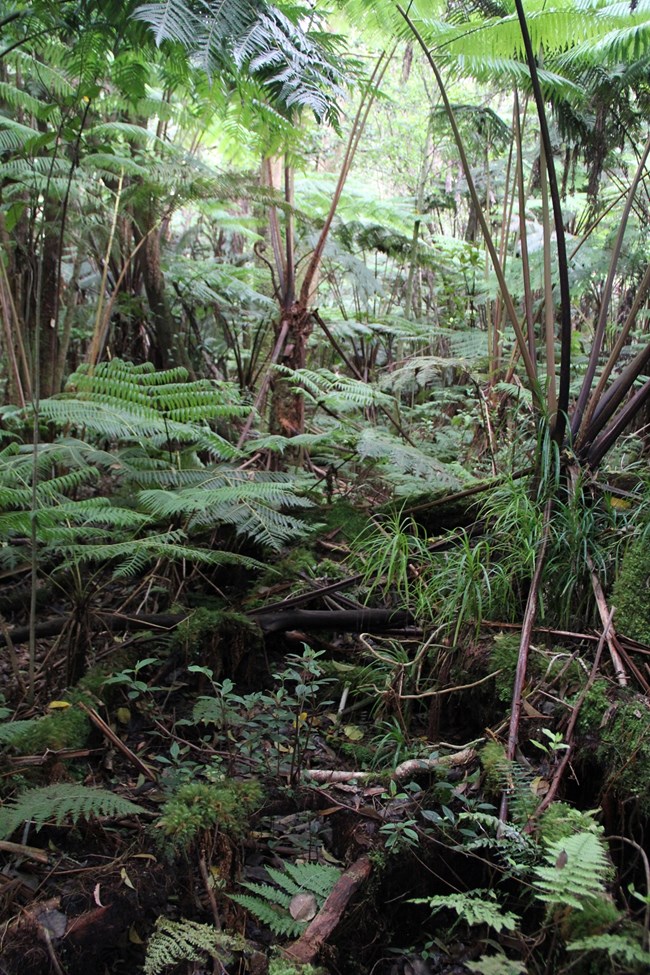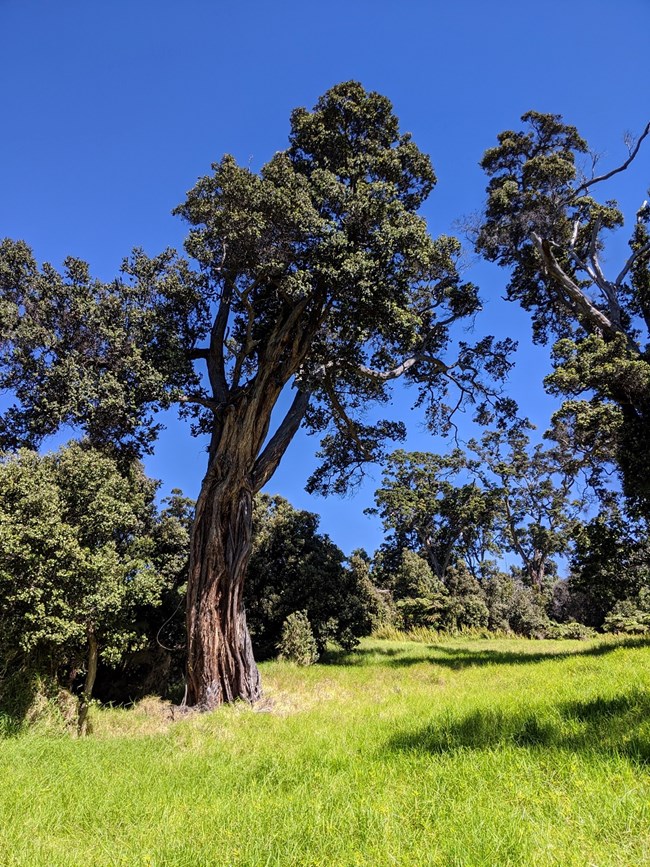Last updated: August 13, 2021
Article
New research finds fencing out ungulates protects ʻōhiʻa forests

NPS Photo

UH-Hilo Photo

NPS Photo
"Our research provides further evidence that fences and ungulate removal are effective strategies to protect our native forests from invasion and widespread ROD-induced mortality, and we are seeing that first-hand in Hawaiʻi Volcanoes National Park. The focal sites include forests near the summit of Kīlauea, including Nāhuku and the ʻŌlaʻa Tract rainforests and the Kahuku Unit," said David Benitez, an ecologist at the park and co-author of the paper. "We are very excited about this collaborative research, and the resulting technologies such as a safer and more cost effective airborne mapping system which can pinpoint ROD outbreaks across vast areas on all Hawaiian Islands," Benitez said.

UH Hilo Photo/D.Duda
The areas surveyed in Hawaiʻi Volcanoes National Park include forests in the Kahuku Unit, Nāhuku lava tube area and the Koa Unit of the ʻŌlaʻa Tract.
Read the full 15-page research article that published August 4, 2021 here: https://www.mdpi.com/1999-4907/12/8/1035.
The researchers include scientists from Hawaiʻi Volcanoes National Park , the University of Hawaiʻi at Hilo, the U.S. Department of Agriculture, and the U.S. Forest Service.
